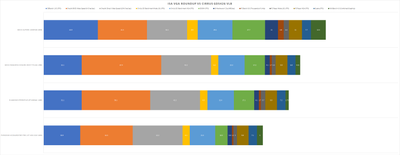@pshipkov
Re: 286
—————
Interesting developments indeed. It’s a shame that your board seems stuck at 12MHz. I’ll dig mine out and see where I can go with an overclock to 16Mhz, but certainly it seems like the AWARD BIOS is the better option for starting. The AMI BIOS limitations do not surprise. The 6/6/92 HI-COLOR core seems a bit more robust; a shame no such BIOS exists for this board.
Re: Symphony 486
———————————
Agreed on all fronts. I am troubled by the lack of DLC support. It frustrates to see the silkscreen referencing the DLC, and yet the board failing to POST with it. I do think your DTK board is of better quality, as far as implementation goes. The Symphony chipset’s VLB implementation is a bit odd too. I have noticed some oddities in utilities like X-VESA, whereby anything over 16-bit reads and writes occur at the same speed. This is troubling, as the cards tested (ET4000/W32p, S3 864, S3 Trio64) are all 32-bit host bus cards and should not have this limitation like the GD-542x cards. Perhaps there is more to this, as UNIVBE overcomes this, at least somewhat, and increases performance across the range. Maybe X-VESA is a faulty benchmark?
@ maxtherabbit - I believe so, as the VLSI 200 is quite performant, just as is the Symphony Haydn II, and both of their successors were not great.
Re: Chips
—————
Synthetic tests certainly don’t tell the story, but there is undoubtedly some usefulness in being able to compare numbers. It is unfortunate that SpeedSys is quirky as it is.
The F4041 data sheet indicates support for 1MB of L2. I do not understand why the manufacturer would cripple it like so, but I have not tried 128k x 8 SRAMs, only 64k x 8s. I will have to try the 128k x 8 chips and see. I have attached the data sheet, if you’re curious at all.
I will absolutely do so! Which Wolf3D benchmark do you use? I can use WinTune2 and see how that board performs. I’ll take some notes as I have been amassing a number of VLB cards and would be cirrus to see how they compare.
Regarding the rendering tests, are there any standard renders built into the software, or do you run your own routines?
———
I think I may eventually run benchmarks in Windows 3.1 and Windows 95, but for now will work on 3.1 so we can all compare our work.
Re: Vision 86x cards
————————————
I can get to work and standardize my findings against a Trio64.
Interestingly, my Diamond Stealth 64 DRAM T is identified as a Vision864 by SpeedSys (as aforementioned, not reliable, but still interesting) on the Chips board. I am uncertain why; it has BIOS v2.02. This may lend to the theory/understanding that the Trio32/64 is just an integrated 864 and Trio64V+ is an integrated 868.
If anyone here has any of the few VLB Trio64V+ cards, does/do theirs compare favorably against the Trio64 VLB or are they pretty much the same numbers-wise? I am curious because my 868 seems slower (slightly) than my 864, but I suspect memory frequency/timings is at play here since both cards have SIEMENS HYB51417BJ-60 chips (possibly EDO, as the pinouts match other EDO chips).
Does the Trio64 have a 32-bit datapath to the RAMDAC? The Vision86x cards I’ve tested are 16-bit and, perhaps, that might lend to whether there’s slight difference in Windows GUI and GDI performance?
-Live Long and Prosper-
Feel free to check out my YouTube and Twitter!
